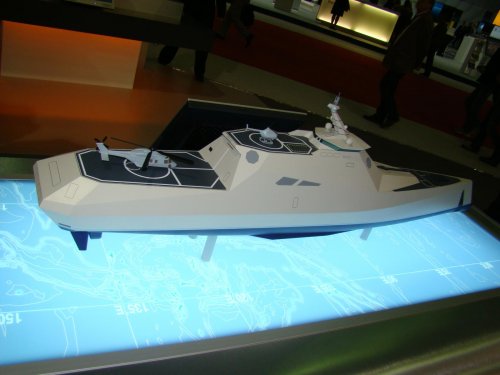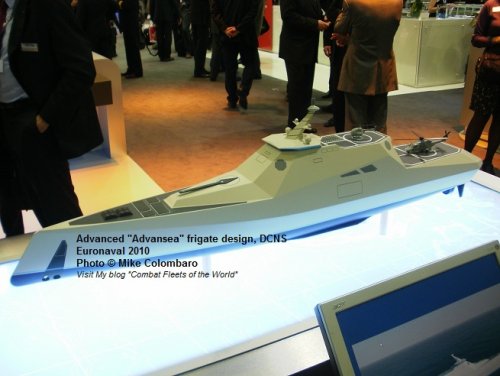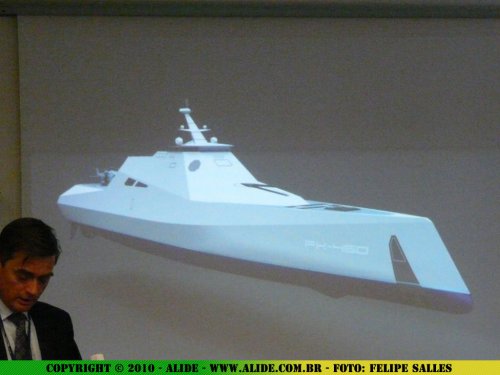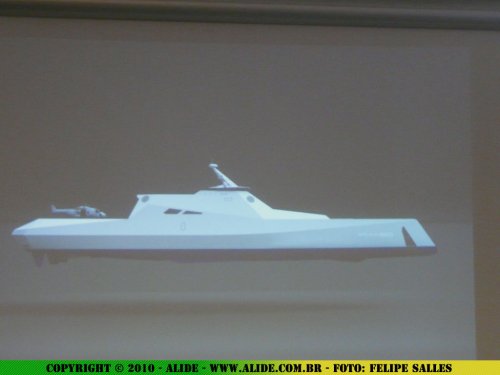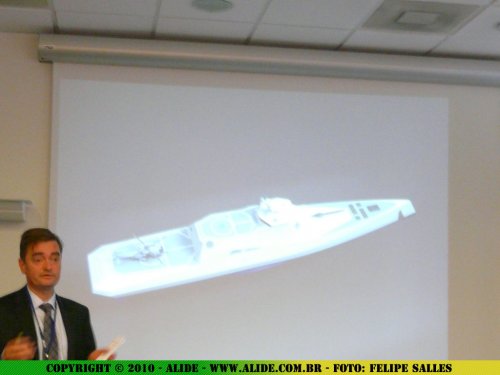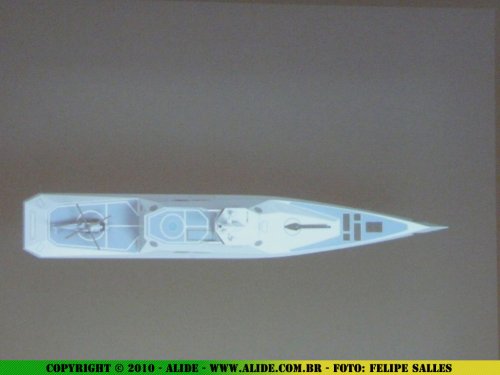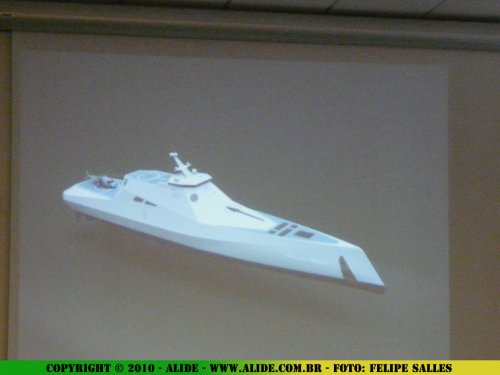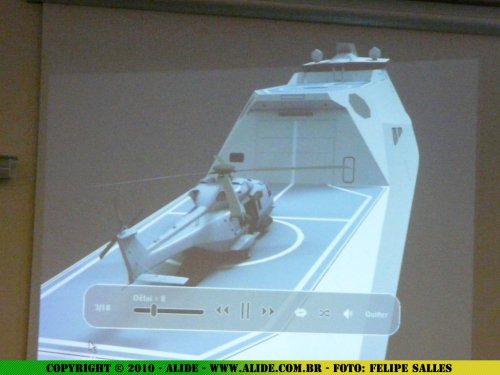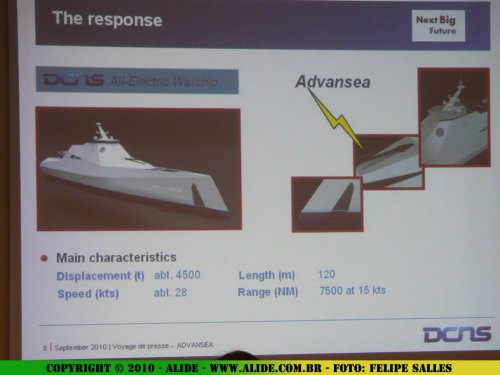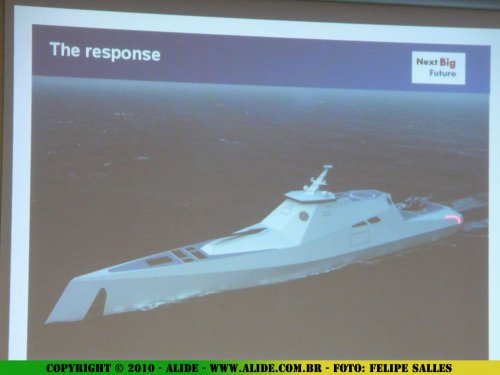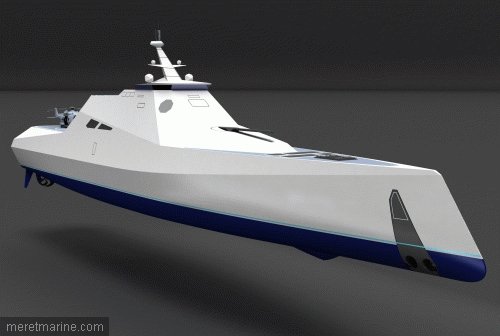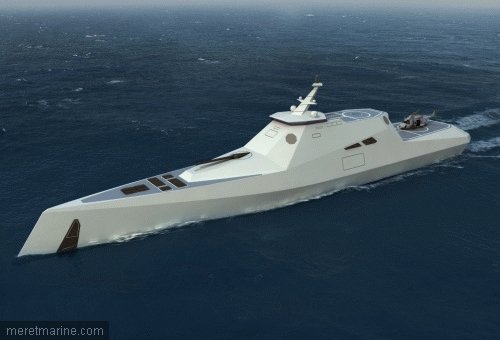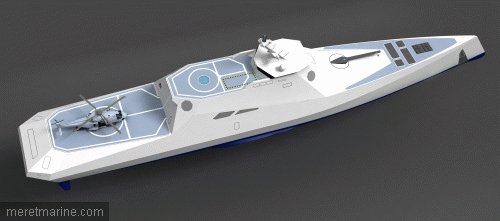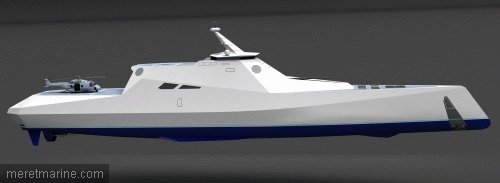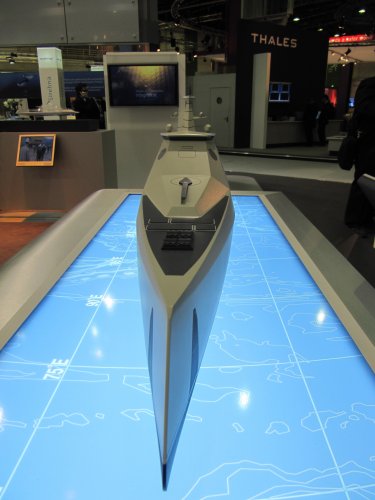DCNS press release:
Sources:
http://en.dcnsgroup.com/technology-innovation/advansea/
http://www.airgroup2000.com/forum/viewtopic.php?t=227847
http://combatfleetoftheworld.blogspot.com/search?updated-max=2010-11-08T18%3A19%3A00%2B01%3A00&max-results=20
Advansea concept ship, an advanced all-electric surface combatant
The timely development of good products meeting the needs navies are likely to face around 2025 presupposes first, knowledge of where we’re headed, and second, ideas about how to get there. The ADVANSEA (ADVanced All-electric Networked ship for SEA dominance) concept ship presented at Euronaval 2010 gives a first glimpse of what a next-generation all-electric surface combatant might look like.
To meet the future needs of Navies around the world, DCNS pursues a sustained R&D policy focusing not only on product improvement, but also on creative new concepts.
Advansea, a powerhouse of technology tailored to expectations
How to design and build a warship offering improved sensors, safety and stealth and compliance with environmental standards without jeopardising engineering/cost/scheduling requirements?
The answer, the design team believes, lies in three disruptive technologies and DCNS’s capacity to manage and coordinate their adoption by leveraging its expertise as both naval architect and a systems integrator specialising in surface combatants. The disruptive technologies are:
- Superconducting electric propulsion motors combining energy savings, reduced weight and size and optimal power ratings (10 MW/motor). Superconductivity is the property of certain materials whereby resistance to electric current falls to a value very close to zero at very low temperatures.
- Impulse energy storage devices that promise the instantaneous availability of large pulses of power.
- Real-time power flow management to users thanks to the convergence of combat system and platform management system technologies.
In each of area, DCNS engineering teams are working on the practical integration of these technologies in a shipbuilding environment.
In terms of naval missions, the aim is to design a warship for use in regional conflicts with a risk of intense combat. This means designing a ship combining improved means of threat detection, the capacity to respond quickly to such threats using gradual- and decisive-response weapons, and greater safety and comfort for the ship’s crew.
First demonstrators around 2018?
Although the ADVANSEA project described here is not intended to resemble in detail the product to which it may later give rise, it does help us to see the way forward. The first demonstrators may be available towards 2018. The project is also emblematic of DCNS’s determination to position itself as a world leader in all-electric surface combatants.
Technical data
Sensors and stealth
- integrated topside: multi-sensor system (comprising radars, planar antennas and communication systems) integrated with superstructure for improved operational performance and lower observables
- organic USVs, UAVs and RHIBs or similar.
Graduated and decisive response capabilities
- laser weapons, electric gun
- missile silos integrated with hull.
Nautical qualities
- reversed stem
- quiet, high-efficiency propulsor
Eco-design
- reduced environmental footprint
- reduced fossil fuel consumption.
Sources:
http://en.dcnsgroup.com/technology-innovation/advansea/
http://www.airgroup2000.com/forum/viewtopic.php?t=227847
http://combatfleetoftheworld.blogspot.com/search?updated-max=2010-11-08T18%3A19%3A00%2B01%3A00&max-results=20

